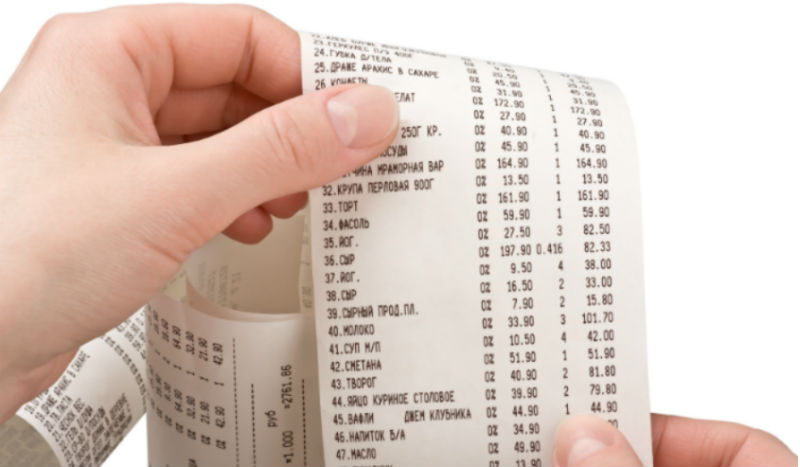Nobody’s shopping list includes hormone-disrupting BPA (Bisphenol-A). But a new study shows that you and your cashier are most likely getting a dose of the chemical each time the cashier hands you your receipt at the checkout.
BPA is a known component of thermal receipt paper – the paper used to print out ink-free receipts at many stores. Our study “On The Money” uncovered BPA in receipts a few years ago. It also found the chemical was rubbing off on paper money.
Get The Facts On Bisphenol-A (BPA)
BPA has been linked to a variety of health concerns, including cancer, hormone disruption, and diabetes. Learn more.
Now researchers at the National Center of Environmental Health Services, the National Center for Toxicological Research, and the National Cancer Institute have found that thermal receipt paper is a potential source of exposure to BPA and two common BPA alternatives (BPS and BPSIP).
The researchers recruited cashiers working at a variety of stores in North Carolina —restaurants, grocery stores, pharmacies, clothing stores, pharmacies, bookstores, and home improvement centers—as well as a group of non-cashiers. Researchers tested the urine and blood of the cashiers both before and after their work shifts, tested that of the non-cashiers, and tested samples of receipt paper from the stores where the cashiers worked.
Results include:
- Levels of BPA and BPSIP were significantly higher in urine of cashiers handling receipts made with those chemicals than in that of non-cashiers, indicating the importance of exposure from receipt paper.
- BPS was significantly higher in post-shift cashier’s urine samples than in pre-shift, showing that this BPA alternative is also transferred to workers from receipt paper.
- BPA and its close relatives continue to dominate thermal paper, with all receipts tested containing 0.7 – 3.6 % BPA, BPS, or BPSIP.
The researchers say these results support the conclusion that occupational use of thermal receipt paper is a source of BPA, BPS, and BPSIP exposure to cashiers. This finding should be concerning to anyone who handles a receipt, but especially for cashiers who repeatedly handle receipts during their work shift.
What Should You Do?
If you are a cashier or work with paper receipts, you can reduce your exposure to BPA by following these tips:
- Minimize your handling of thermal receipts.
- Avoid hand to mouth contact while handling receipts.
- Don’t handle after using an alcohol based hand sanitizer.
- Ask customers if they want a receipt.
- Wash and dry your hands thoroughly after breaks.
- Follow these additional tips from the State of Minnesota.
If you are a consumer you can reduce your exposure by:
- Refusing a receipt when you can.
- Storing receipts separately, such as a small envelope in your wallet or purse.
- Wash your hands after handling receipts or money.
- Keep receipts away from young children.
- Talk to the store about switching receipt paper.





